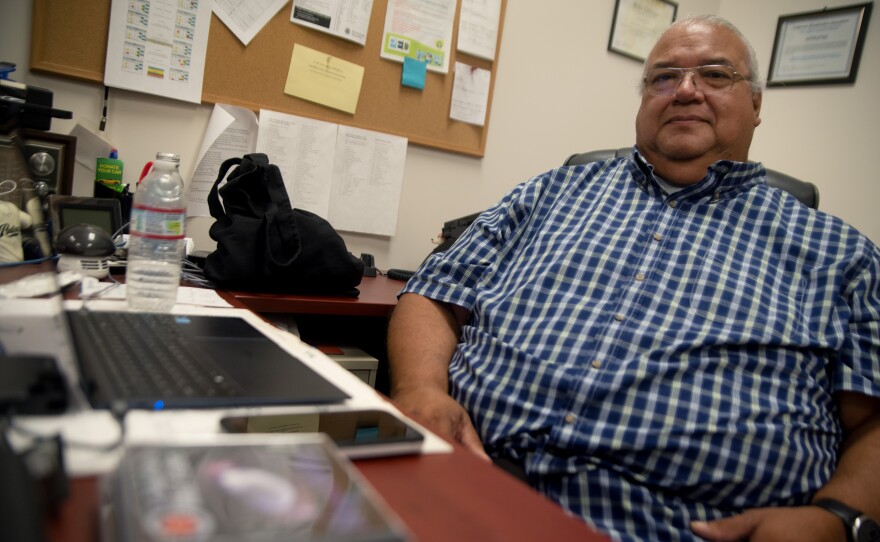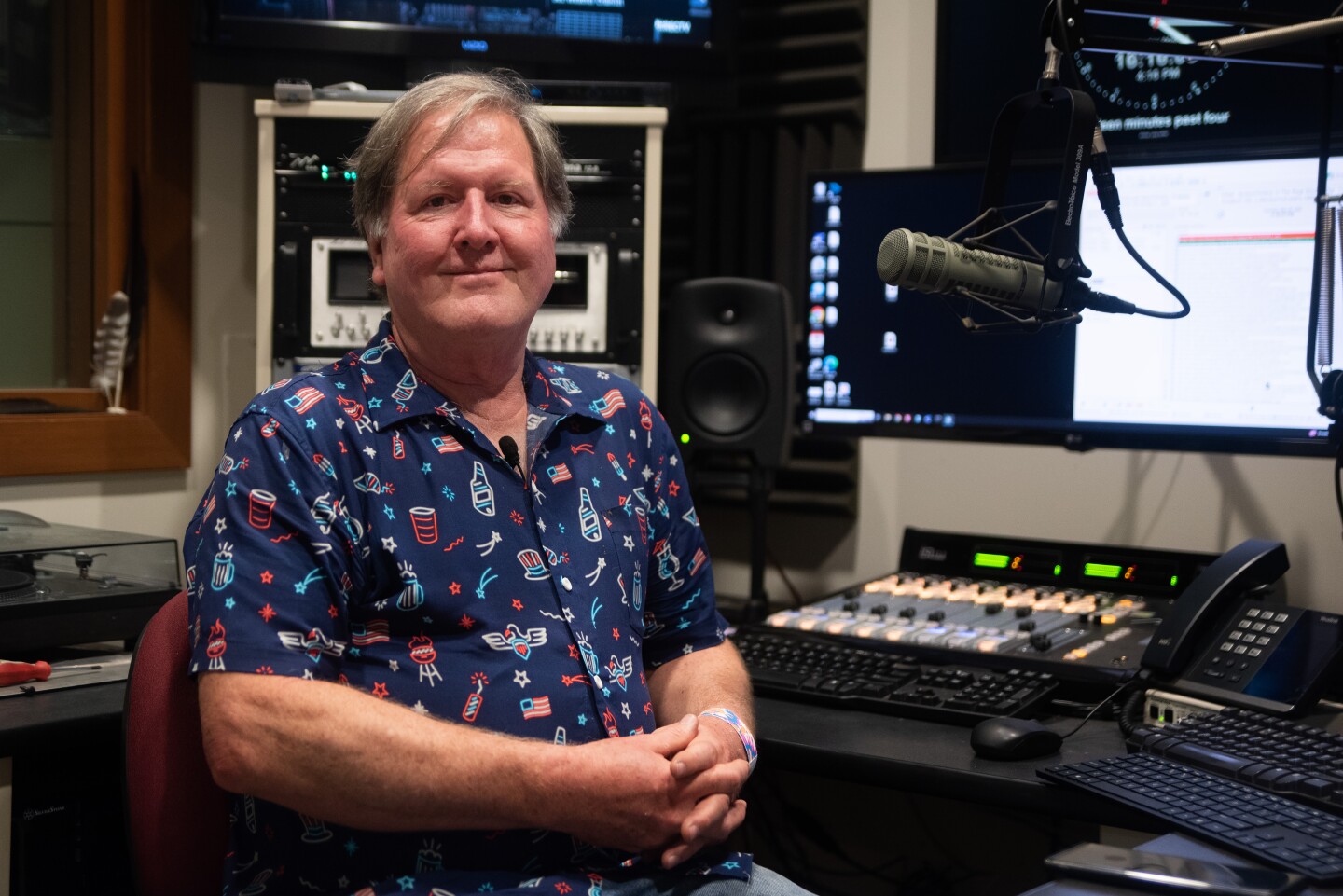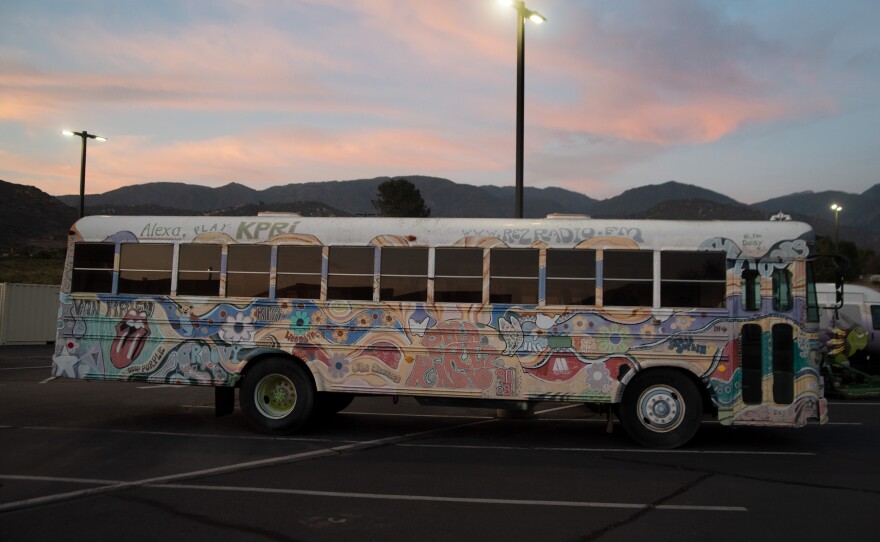If you drive toward the Pala Reservation on Highway 76, and tune in to 91.3 FM, you might just hear the time announced in words that will be unrecognizable to most listeners — except for some who call the Pala Valley home.
At every top of the hour and half hour, 91.3 KPRI broadcasts a time check in Pá'anexily, also known as Cupeño — the native language of the Pala Band of Mission Indians.
Pala Rez Radio serves the people who live within the San Luis Rey River Valley. At only 150 watts, their broadcast is low-powered. Anything stronger would compete with neighboring radio stations in San Diego and Riverside counties. The station’s signal is just strong enough to reach the Pala Valley, extending to the border of Fallbrook, Bonsall and the crossroads between Highway 76 and Interstate 15.
The station was born of fire. In October 2007, amid extreme drought and Santa Ana conditions, the Harris, Witch Creek and Rice fires broke out. Pala Rez Radio station manager John Fox said communication in the area was terrible.
“Pala was evacuated because there were fires on two sides of it," he said. "Most people stayed out of town for about four days, not realizing they could have come back after about four hours. The communication was that poor.”

Isolated from the broadcast centers of San Diego and Riverside counties, the tribal council decided they needed to remedy the problem. When the opportunity came for a new radio station, the tribal council applied.
Pala Rez Radio went on the air in 2011, broadcasting from the center of the Pala reservation, a stone's throw away from the Tribal Administration building and near the Mission San Antonio de Pala. The station is financially sustained by the Pala tribe, with “one and a half employees,” Fox said with a smile.
Fox is a longtime San Diego radio veteran, brought in at the very beginning. Eric Ortega is the other employee, working part-time as the manager’s assistant. Ortega is a Pala resident and member of the Pala Tribe of Mission Indians. A rotating stable of volunteers are in charge of the various programs that are broadcast over the airwaves.



The bare-bones operation is possible through technology and automation. Volunteers remotely program shows that include classic rock, reggae, a subgenre of reggae called “Dub,” and a mixture of songs called "Rez Party Mix."
There are archival programs, too. “Back in the Day with Doots and Dar” features a mother-daughter team who play music, talk with local guests and share stories of Pala. Ortega produces and hosts “Pala Life: Past and Present,” with interviews about "life B.C. (before casino)."
That show helped lead to the station's time checks and ID announcements being done in Pá'anexily. Ortega said he first started incorporating the language into the show.
"And it just kind of built from there.” Ortega said. “We started it and incorporating more language into it. So, well, we came up with the idea ... about doing the time checks in the language.”
Doing so was a bit of an endeavor. At the station’s inception, there were few tribal members who were fluent in the language. Ortega estimated only about two to three people on the reservation could speak fluently.
They brought some of those fluent speakers in to record each number individually and the station ID. After each number was recorded, a program was used to insert each letter into sequence, taking care to make the inflection sound natural. The time is read as each number, one after another in Pá'anexily.
“I figured it was a way for people to learn how to learn the numbers, because you can hear it, hear what we say, and look at the clock and you go, 'Okay, that's what you're saying,'" Ortega said. "Our top of the hour has 'Chémesh Atáxem Kúupangax,' which means, 'We are the people of Kupa,' and it says, ‘KPRI.’”

The time checks were an adaptation to the modern concept of accurate time telling. Historically, the people of Kupa did not need numerically accurate time, Ortega said. The language allows for generalizations like early morning, late morning, noon and late afternoon, describing the location of the sun and shadows in reference to the land they inhabited.
While the station has programs geared toward Pala tribal members, they want to reach more than those inside the Pala valley. “We'd like to reach all the native communities in San Diego County, if we could. And there are 18 tribes in San Diego County, 18 reservations,” Fox said.
He noted if there is a listener halfway across the world, tuning in is still possible via the Pala Rez Radio app or website rezradio.fm.
As part of its outreach, Pala Rez Radio is set to broadcast live from the San Diego County Fair on Saturday, June 21, which is the fair's Native American Heritage Day.
Fox makes a point of the station's existence to serve the tribal members, residents of Pala Valley and the nearby areas, not just for emergency communications but for preservation of culture. “We've done a number of interviews with elders, some of which have already passed now,” he said. “And, so we're certainly glad we were able to talk to them.”
Ortega has also contributed to the preservation of the Cupeño culture through his Saturday morning show “Songs of the Southwest,” featuring the traditional bird song, a form of music that is endemic to the southwestern tribes and is unlike traditional music of tribes in other regions of the country.
“If you go to the Midwest, upper Midwest, areas like that, you're going to hear drumming. You're going to hear powwow music,” Fox said. “But powwows, while they happen here, they're not quite so much a Southern California thing. Bird songs are, and they tell stories.”
Ortega said the show originated from a tribal member’s request. “I got a call one time from a lady in our community. She wonders why we don't play more bird songs, local music ... like Native American music,” Ortega said.

But to fill a half-hour show for an ongoing amount of time, the station needed a lot more material than they had. Ortega estimated the station would need over 500 individual songs to avoid repeating the same ones over and over. So he started attending events, get-togethers, impromptu gatherings — anything that would have the native singers — and recorded them.
Through that process, Ortega was able to provide historical context and wove stories about the songs into the program, mentioning elders who had taught the new generation of tribal singers. “I learned more about bird songs that I never thought I, you know, I didn't even know,” he said.
“So what you hear very often isn't published music, but it's things that either groups have provided us with or we recorded,” Fox said. “But it's, you know, kind of the spice that tells you you're listening to Rez Radio.”
When asked about the station and the service it provides to the community, Fox and Ortega swell with pride.
“We're here for an emergency. It may only be one tenth of 1% of the time, but when you need it, you need it. And that's where cell phones fall down. I mean, no matter how good broadband gets, when it hits the fan, everybody's going to be on there and the bandwidth is gone and you can't get through,” Fox said. “If you've got a car, you've got a radio and you've got a way to get emergency information and not worry about whether you're fighting with 10,000 other cell phone users."
For Ortega, the station has evolved into so much more: a great piece of art for their community. “When I came to the radio station, I was thinking of it just as a radio station. After I started working here. And with John's prompting, we made it ours,” he said. “A lot of beautiful things are done here.”




